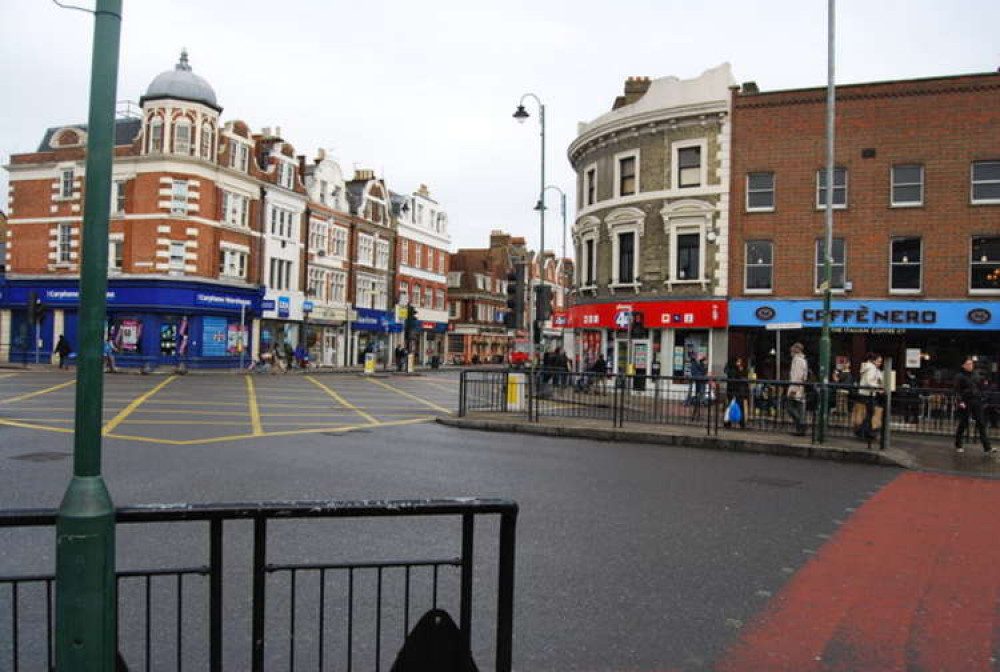Navigating Change of Use in Wandsworth Tooting: An In-Depth Exploration
Tooting, a vibrant district in South London, has increasingly become a hotspot for property development and transformation. As the area continues to evolve, the concept of “change of use” has emerged as a significant opportunity for investors, property owners, and developers. This detailed guide delves into the intricacies of changing the use of properties in Wandsworth Tooting, highlighting the essential processes, benefits, challenges, and success stories that define this dynamic aspect of property development.
Defining Change of Use
What Constitutes a Change of Use?
Change of use pertains to the alteration of a building’s or land’s designated purpose. This legal and administrative process involves shifting a property from one use class to another, as defined by the Town and Country Planning (Use Classes) Order 1987. For instance, a residential property might be converted into a commercial space, or a retail unit could be transformed into a café. The change of use is crucial in adapting properties to meet evolving market demands and opportunities.
Overview of Use Classes
The Use Classes Order categorizes properties into specific classes based on their primary functions:
- Class A: Includes shops (A1), financial and professional services (A2), and restaurants and cafés (A3).
- Class B: Comprises offices (B1), light industrial uses (B2), and storage and distribution (B8).
- Class C: Encompasses residential uses such as houses (C3), hotels (C1), and care homes (C2).
- Class D: Covers non-residential institutions (D1) and assembly and leisure uses (D2).
Each class comes with its own set of regulations, and changes between different classes usually require formal planning permission. Understanding these classes is essential for any successful change of use project.
Why Tooting is a Prime Location for Change of Use
Strategic Positioning
Tooting’s strategic location in South London, with its excellent transport links including the Northern Line, overground services, and numerous bus routes, makes it a highly desirable area for property investments. Its proximity to central London enhances its appeal for both residential and commercial developments, driving interest in change of use projects.
Diverse Community and Dynamic Economy
Tooting is known for its vibrant, multicultural community, which contributes to its dynamic economic landscape. The area boasts a rich array of businesses, from traditional markets to modern eateries and boutiques. This diversity creates fertile ground for change of use projects, as property owners can cater to a wide range of needs and preferences.
Expansion and Development Prospects
Recent years have witnessed significant development in Tooting, with numerous residential, commercial, and infrastructural projects underway. This growth has spurred a demand for flexible property uses, prompting property owners and investors to explore change of use opportunities to capitalize on the area’s burgeoning potential.
The Process of Changing Use in Wandsworth Tooting
1. Evaluating Project Feasibility
Before initiating a change of use project, it is crucial to assess its feasibility. This involves evaluating the property’s current use class, determining the desired new use, and understanding the associated planning requirements. Consulting with local planning authorities or engaging a planning consultant can provide valuable insights into the project’s viability and any potential hurdles.
2. Navigating Planning Permissions and Permitted Development
Planning Permissions
In most cases, altering a property’s use class necessitates obtaining planning permission from the local planning authority. The application process involves submitting detailed proposals, including architectural plans, drawings, and supporting documentation outlining the proposed changes and their impact on the locality. The council will review these submissions, considering factors such as noise, traffic, and environmental impact before granting or denying permission.
Permitted Development Rights
Certain changes of use may fall under permitted development rights, which allow specific alterations without the need for full planning permission. For instance, transforming a retail space into a residential unit might qualify for permitted development if it meets specific criteria. It is essential to verify whether the proposed change of use is covered by these rights to streamline the process.
3. Engaging with Local Authorities
Engaging with local planning authorities early in the process can facilitate a smoother transition. This involves discussing the proposed changes with planning officers, addressing any concerns, and ensuring compliance with local planning policies. Building strong relationships with council members can help navigate potential obstacles and secure necessary approvals.
4. Designing and Planning the Conversion
Once planning permission is granted, the focus shifts to designing and planning the conversion. This phase involves collaborating with architects and designers to create a functional and visually appealing layout that aligns with the new use. Considerations such as accessibility, safety regulations, and environmental sustainability should be integral to the design process.
5. Managing Construction and Compliance
The construction phase requires meticulous management to ensure that the conversion adheres to building regulations and quality standards. Engaging experienced contractors and builders who are familiar with local regulations can help ensure compliance and prevent costly delays. Regular inspections by building control officers may be required to verify adherence to safety and quality standards.
6. Marketing and Utilization
After completing the conversion, marketing the property effectively is crucial for attracting potential tenants or buyers. For commercial properties, this may involve targeting specific businesses or industries, while residential properties may benefit from highlighting lifestyle advantages and amenities. Strategic marketing can maximize the property’s appeal and return on investment.
Key Considerations for Change of Use Projects in Tooting
Market Demand and Trends
Understanding market demand and trends is critical when planning a change of use project. Analyzing demographic shifts, consumer preferences, and economic factors can provide valuable insights into the types of properties in demand. This information can guide decision-making, ensuring the proposed change aligns with market needs and expectations.
Compliance with Legal and Regulatory Frameworks
Adhering to legal and regulatory requirements is a fundamental aspect of any change of use project. This includes following planning laws, building regulations, and environmental standards. Engaging with legal professionals and planning consultants can help navigate complex regulations and ensure that the project complies with all necessary standards.
Environmental Sustainability and Impact
Considering the environmental impact and sustainability of the proposed change is increasingly important. Incorporating eco-friendly design elements, such as energy-efficient systems, renewable energy sources, and sustainable materials, can enhance the property’s appeal and contribute to broader environmental goals.
Community Engagement and Social Responsibility
Engaging with the local community and demonstrating social responsibility can significantly impact the success of a change of use project. Understanding community needs and concerns, participating in consultations, and contributing positively to the area’s social fabric can foster goodwill and support for the development.
Notable Change of Use Projects in Tooting
The Tram and Social: A Creative Conversion
The Tram and Social is a prime example of a successful change of use project in Tooting. Originally a disused garage, it has been transformed into a trendy bar and live music venue. This creative conversion leveraged Tooting’s vibrant nightlife and social scene, showcasing the potential for innovative change of use projects.
Tooting Market: Revitalization and Modernization
Tooting Market represents another successful change of use project that has revitalized the area. Once a traditional market, it has evolved into a modern hub for food, shopping, and entertainment. This transformation embraced Tooting’s multicultural heritage while adapting to contemporary consumer preferences, making it a popular destination for a diverse audience.
Benefits of Change of Use Projects
Enhancement of Property Value
One of the most significant benefits of change of use projects is the potential increase in property value. Adapting a property to meet current market demands can significantly enhance its worth, providing substantial returns on investment. For example, converting a commercial space into residential units may yield higher rental income, reflecting the demand for housing in Tooting.
Improved Functionality and Utility
Change of use projects can enhance the functionality and utility of a property, allowing owners to optimize its use. This flexibility enables property owners to adapt to changing market conditions, ensuring that the property remains relevant and valuable over time.
Contribution to Local Economic Development
Successful change of use projects can positively impact local economic development by revitalizing underutilized spaces and contributing to the local economy. By aligning with community needs and preferences, these projects can foster economic growth, create job opportunities, and improve the overall quality of life in Tooting.
Opportunities for Innovation and Creativity
Change of use projects offer opportunities for innovation and creativity, encouraging developers to think outside the box and create unique spaces that stand out in the market. Whether it involves converting a historic building into a modern workspace or transforming an industrial site into a cultural venue, these projects can inspire new ideas and approaches to property development.
Challenges and Considerations
Planning and Regulatory Hurdles
Navigating planning and regulatory hurdles can be one of the most challenging aspects of change of use projects. Understanding and complying with planning laws, building regulations, and environmental standards can be complex and time-consuming. Engaging with experienced professionals and consultants can help mitigate these challenges and ensure a smooth process.
Financial Constraints and Budget Management
Financial constraints and budget management are critical factors in any change of use project. Accurately estimating costs, securing financing, and managing budgets are essential to project success. Unexpected expenses or delays can impact the project’s viability, making careful financial planning and risk management crucial.
Market Uncertainty and Risks
Market uncertainty and risks are inherent in property development projects, including change of use. Factors such as economic fluctuations, changes in consumer preferences, and competition can influence the project’s success. Conducting thorough market research and developing contingency plans can help mitigate these risks and increase the likelihood of success.
Community Opposition and Social Concerns
Addressing community opposition and social concerns is an important consideration in change of use projects. Engaging with local residents, understanding their concerns, and demonstrating how the project will benefit the community can help build support and mitigate opposition.
Conclusion
Changing the use of a property in Wandsworth Tooting offers exciting opportunities for investors, property owners, and developers to capitalize on the area’s growth and potential. By understanding the processes, benefits, challenges, and success stories associated with change of use, stakeholders can navigate this dynamic aspect of property development effectively. With careful planning, strategic execution, and a focus on community engagement, change of use projects can transform properties and contribute to the ongoing evolution of Tooting’s vibrant landscape.



No responses yet